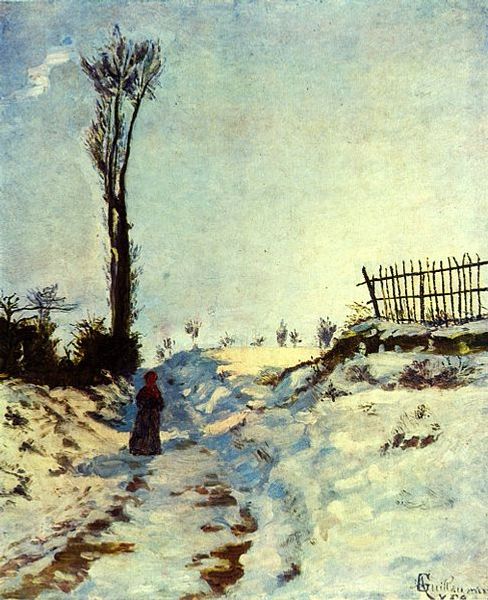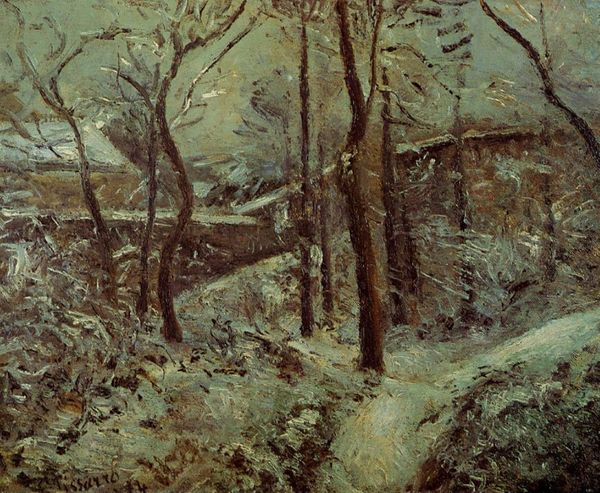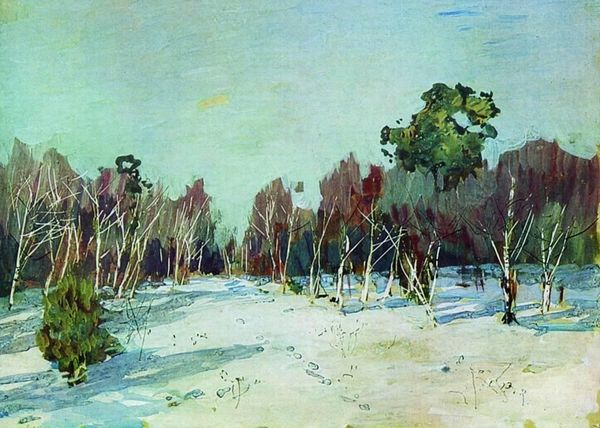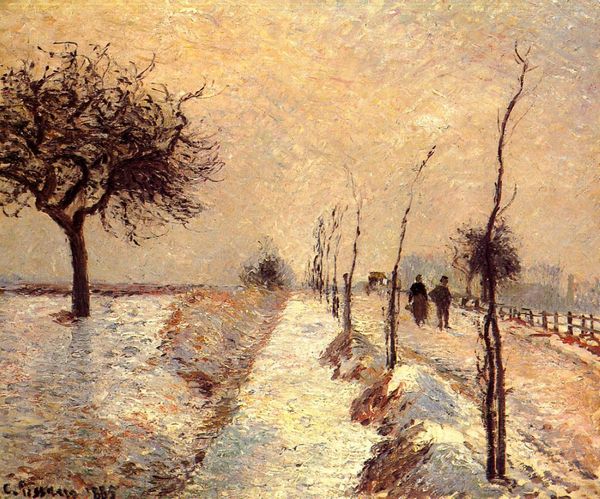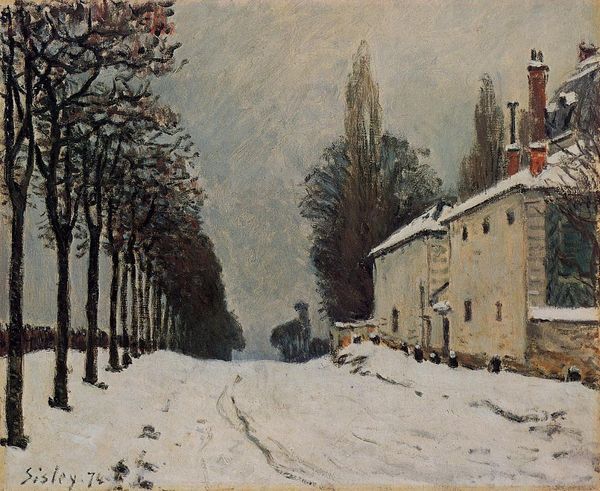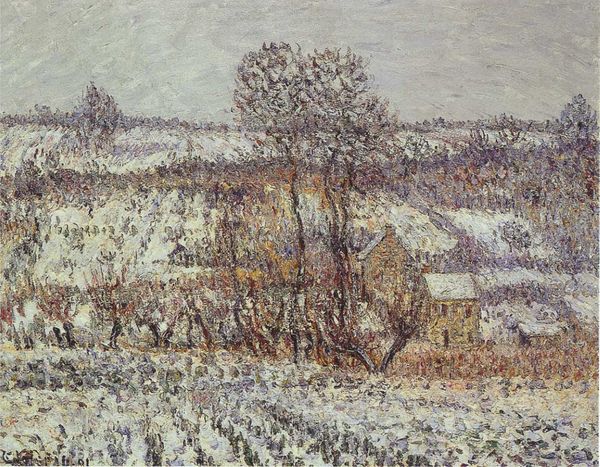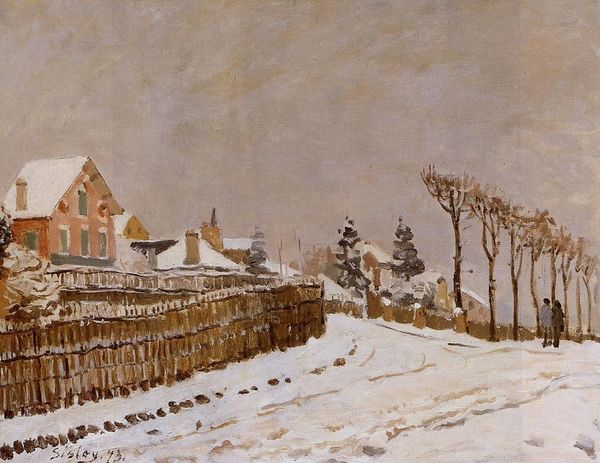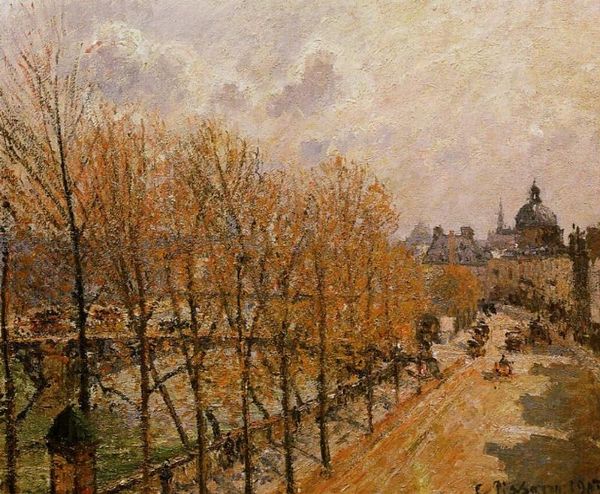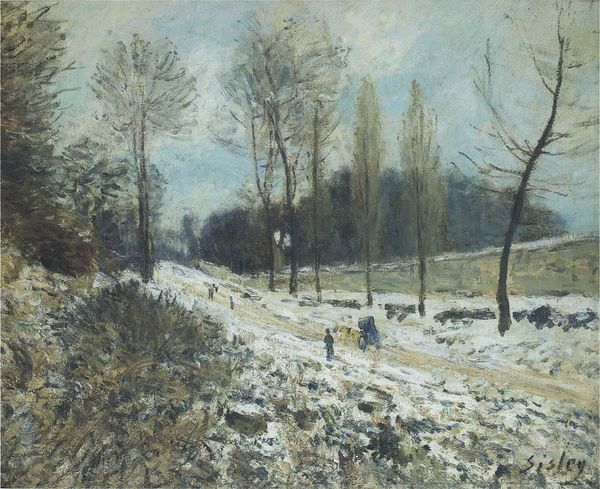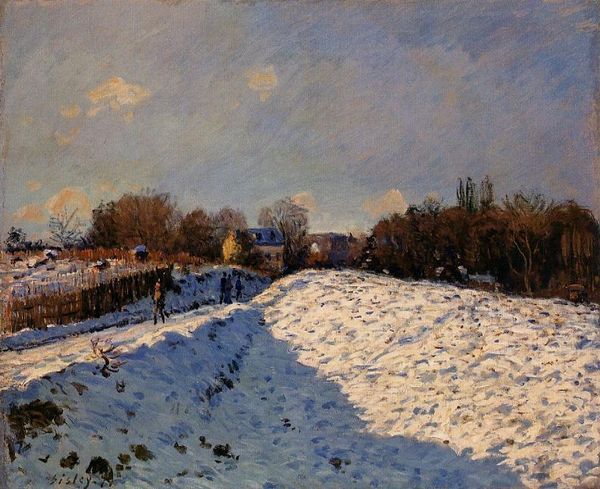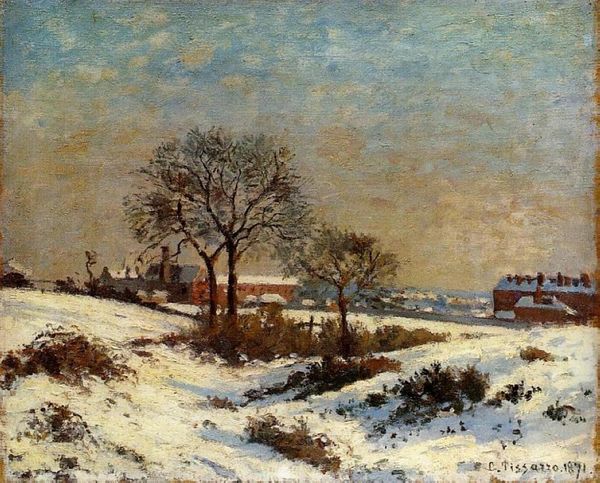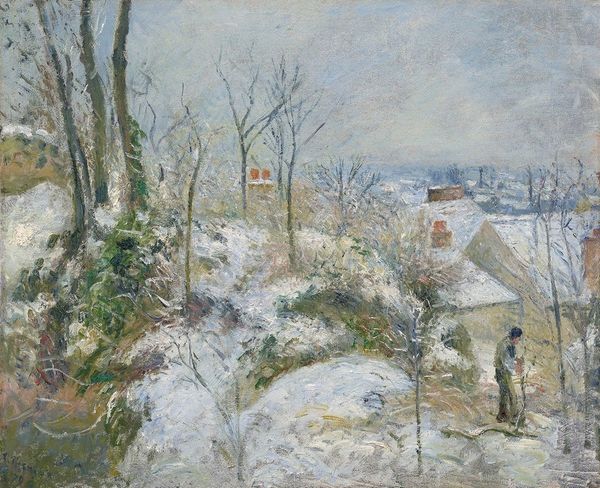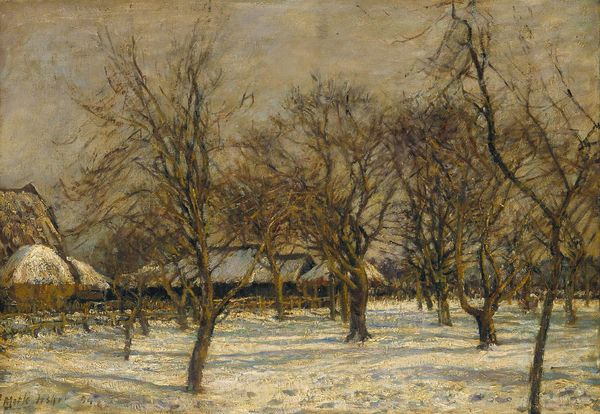
painting, plein-air, oil-paint
#
snow
#
painting
#
impressionism
#
plein-air
#
oil-paint
#
landscape
#
impressionist landscape
#
oil painting
#
cityscape
Dimensions: 38 x 55 cm
Copyright: Public domain
Curator: This artwork before us is "Snow at Marly le Roi" painted in 1875 by Alfred Sisley, rendered in oil paint, during the height of the Impressionist movement. Editor: A rather melancholic atmosphere, wouldn't you say? The muted tones and seemingly haphazard brushstrokes really capture the desolation of a winter day. It's almost stark, yet strangely beautiful in its sparseness. Curator: Indeed. The subdued palette, a study in greys, whites, and browns, creates a subtle tonal harmony. Note Sisley's adept use of impasto, particularly in the foreground, lending a tangible texture to the snow-covered ground. The composition leads the eye towards the vanishing point, cleverly creating depth within a relatively shallow picture plane. Editor: And how fascinating that Sisley, despite painting en plein-air, chose such a seemingly uninspiring subject. Most sought sunlight and vibrancy. Could this choice speak to a larger trend of artists capturing everyday life, even in its less picturesque moments, and his political alignment? Marly-le-Roi, while being a residence for french royalty at times, was home to working class individuals, making the scene even more humble. Curator: That's a stimulating suggestion. Looking more closely, we see the repeated verticality: the trees on the right, the skeletal fence to the left and in the background, there may even be more trees obscured by snow. It forms a sort of screen against the muted light, but these structural forms also function as linear perspective, dividing the painting and establishing depth, thus controlling space and guiding the viewer. Editor: This almost methodical use of repetitive vertical lines juxtaposed against the cold open field does lend itself to the possibility of reading a tension between an objective reality and the lived experience of people from Sisley's social background. Curator: Ultimately, Sisley demonstrates how simple structural forms become their own unique compositional vocabulary for landscape. Editor: And it gives us pause to think about the lives lived within that landscape, hidden but still there. Curator: It is a beautiful rendering from Sisley. Editor: Indeed, it truly stays with you.
Comments
No comments
Be the first to comment and join the conversation on the ultimate creative platform.
